 Overview
Overview
 Normal View
Normal View
 2016
2016
- 2009
- 2011
- 2012
- 2013
- 2014
- 2015
- 2016
- 2017
- 2018
- 2019
- 2021
- 2022
- 2023
- Clear
 Overview
Overview Normal View
Normal View 2016
2016
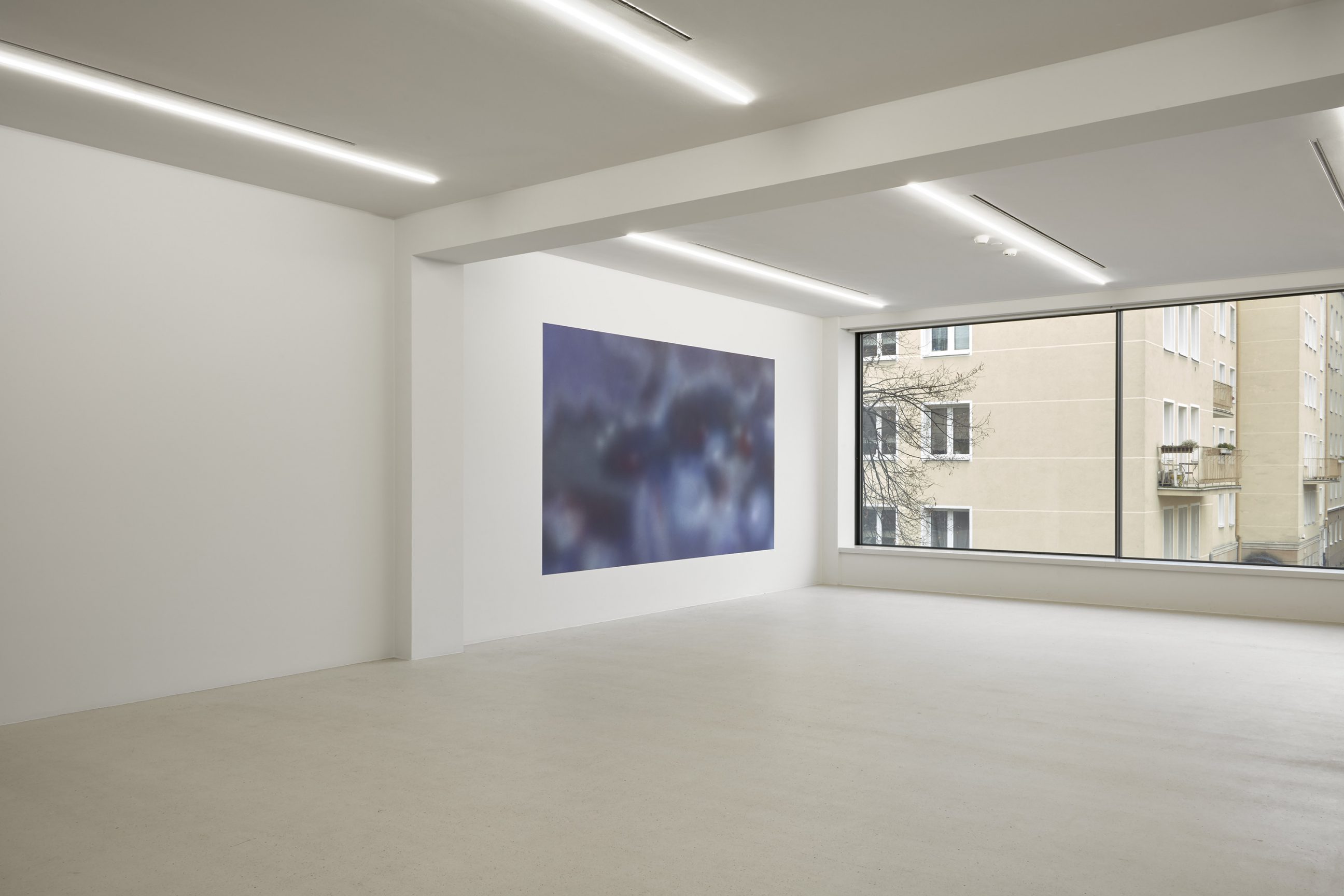
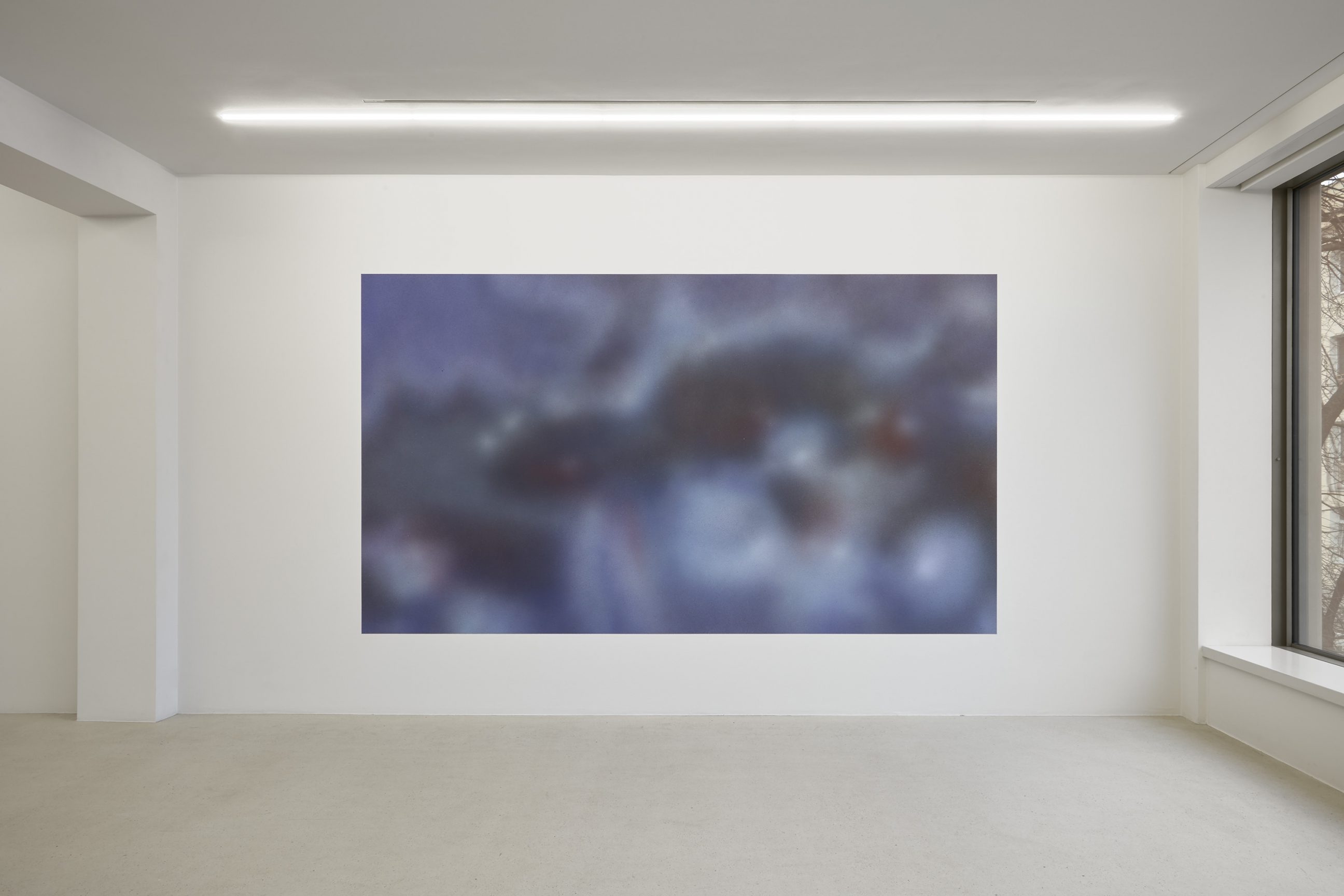
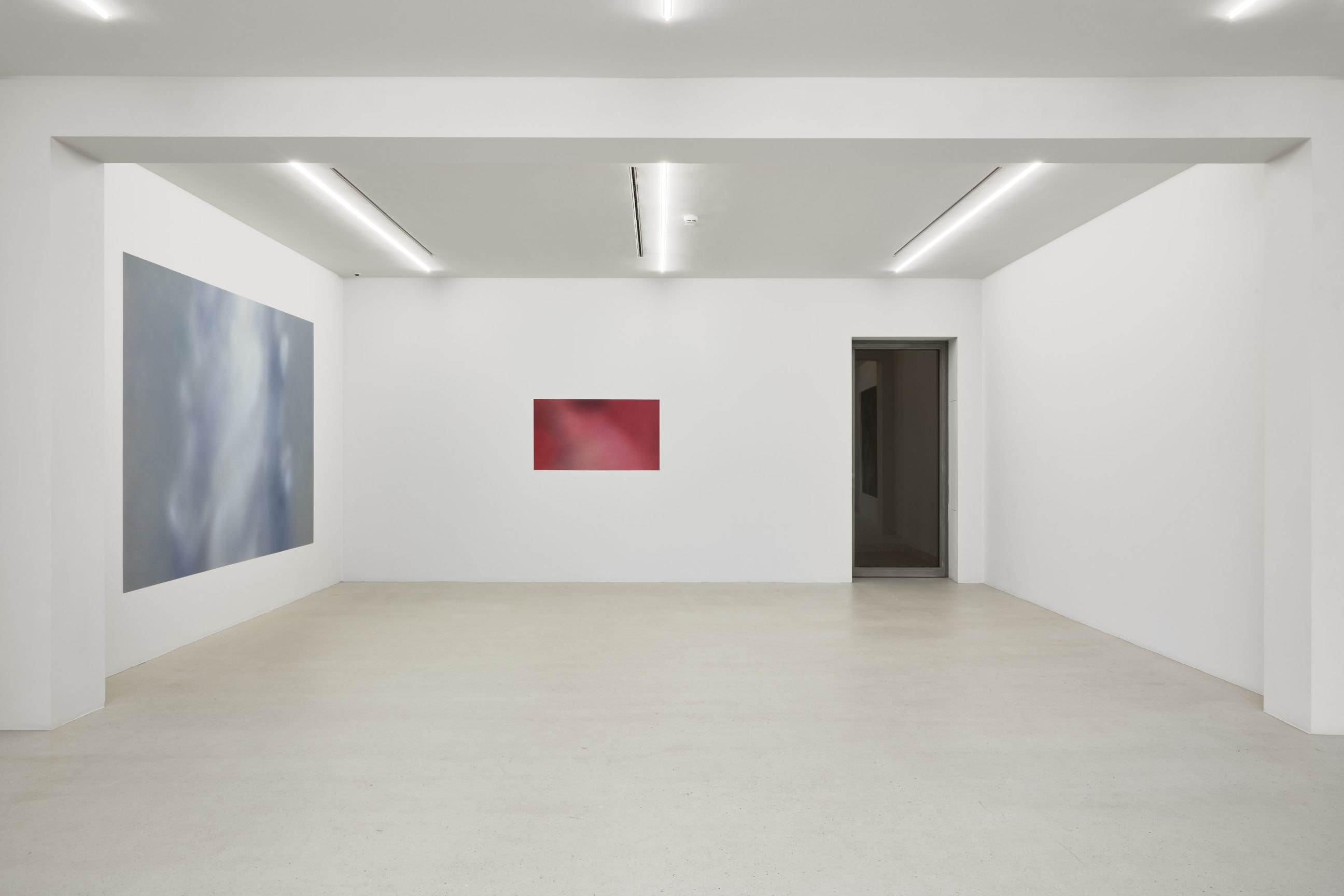
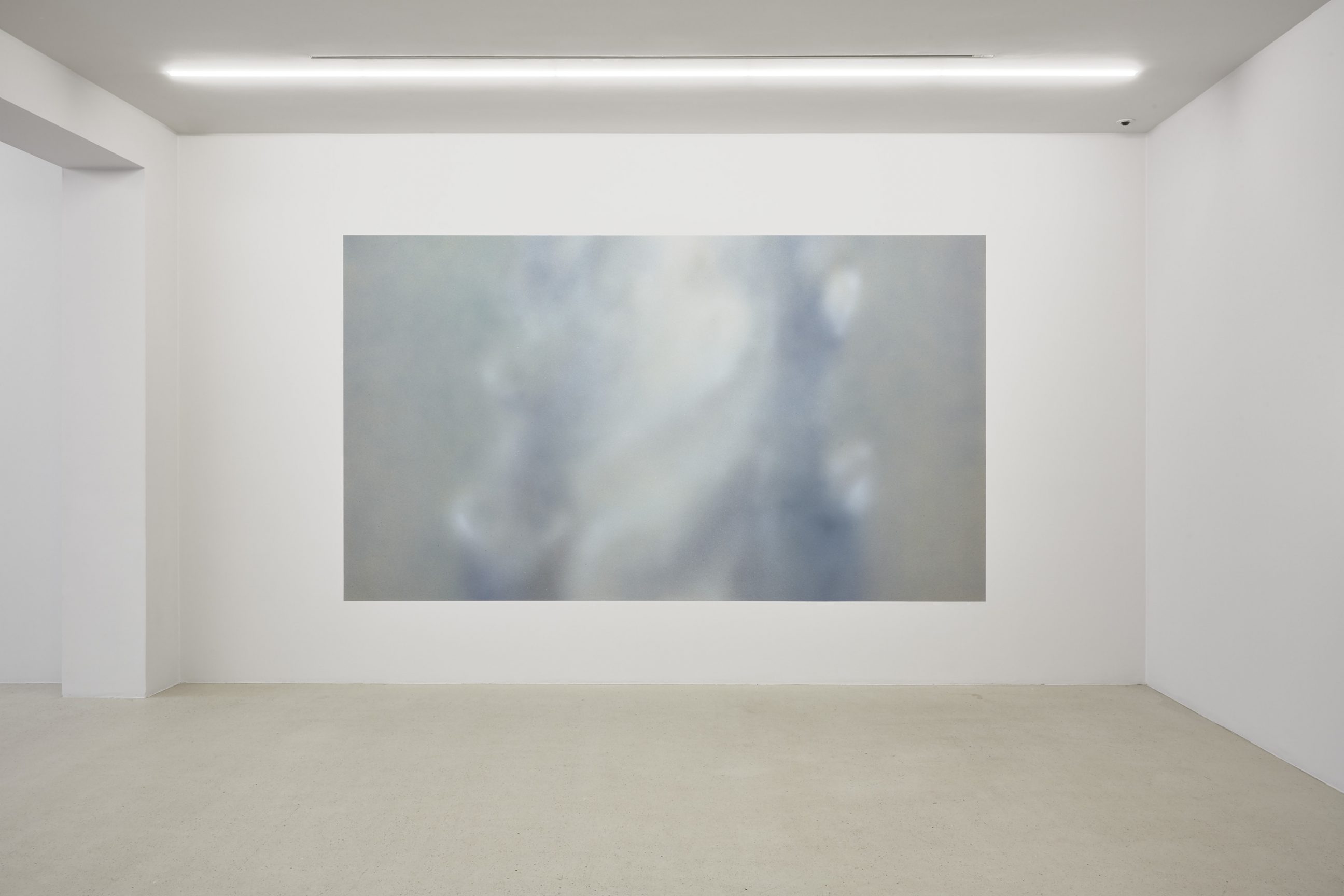
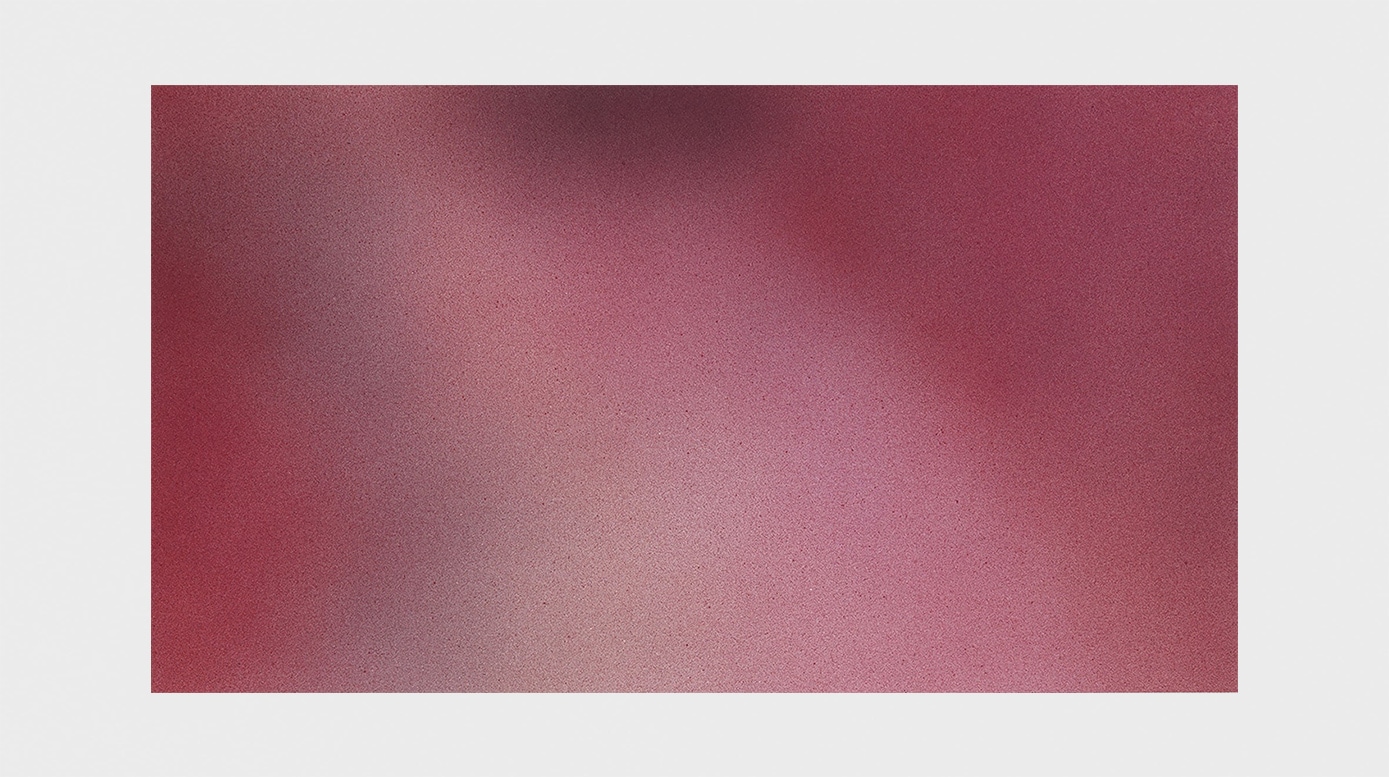
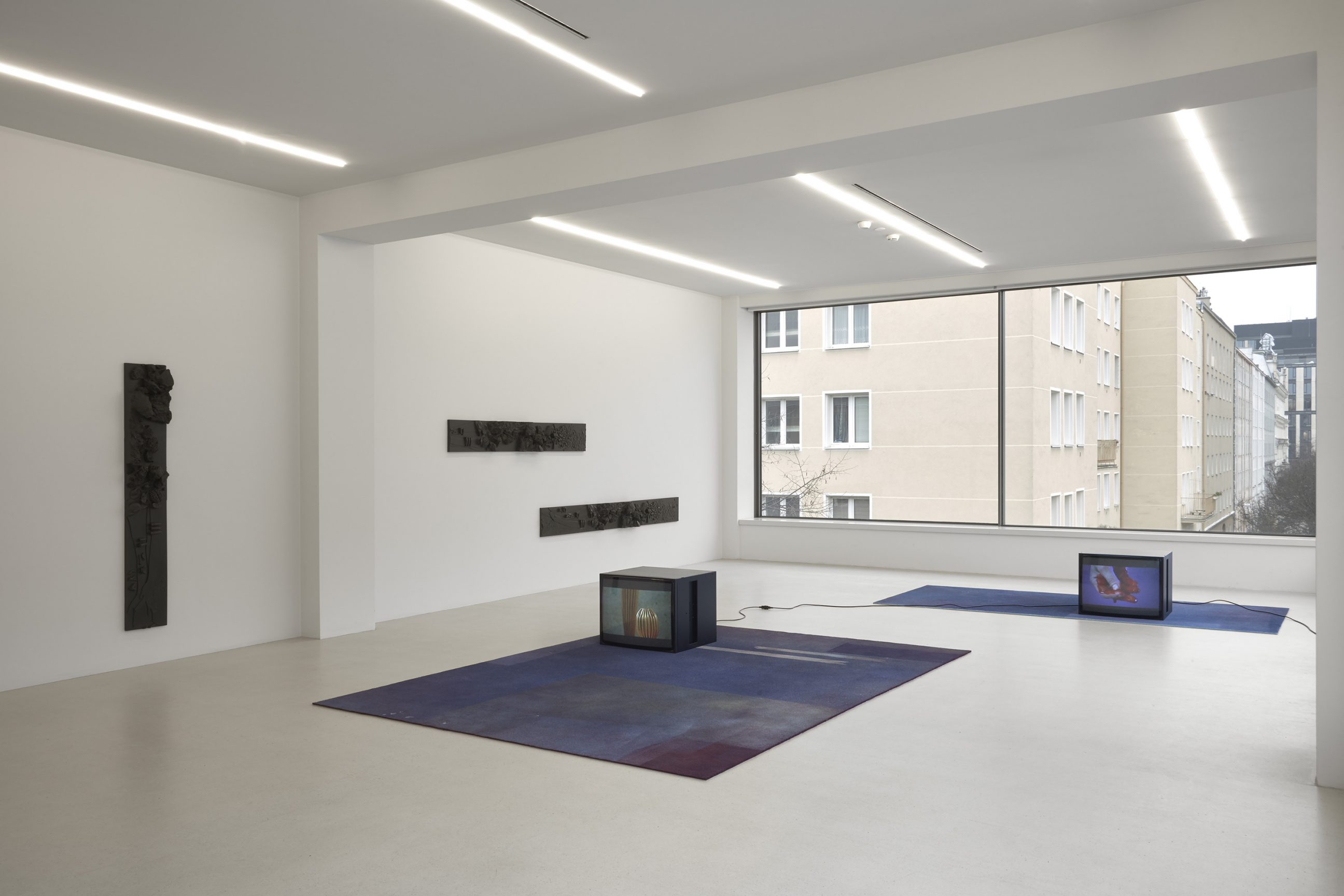
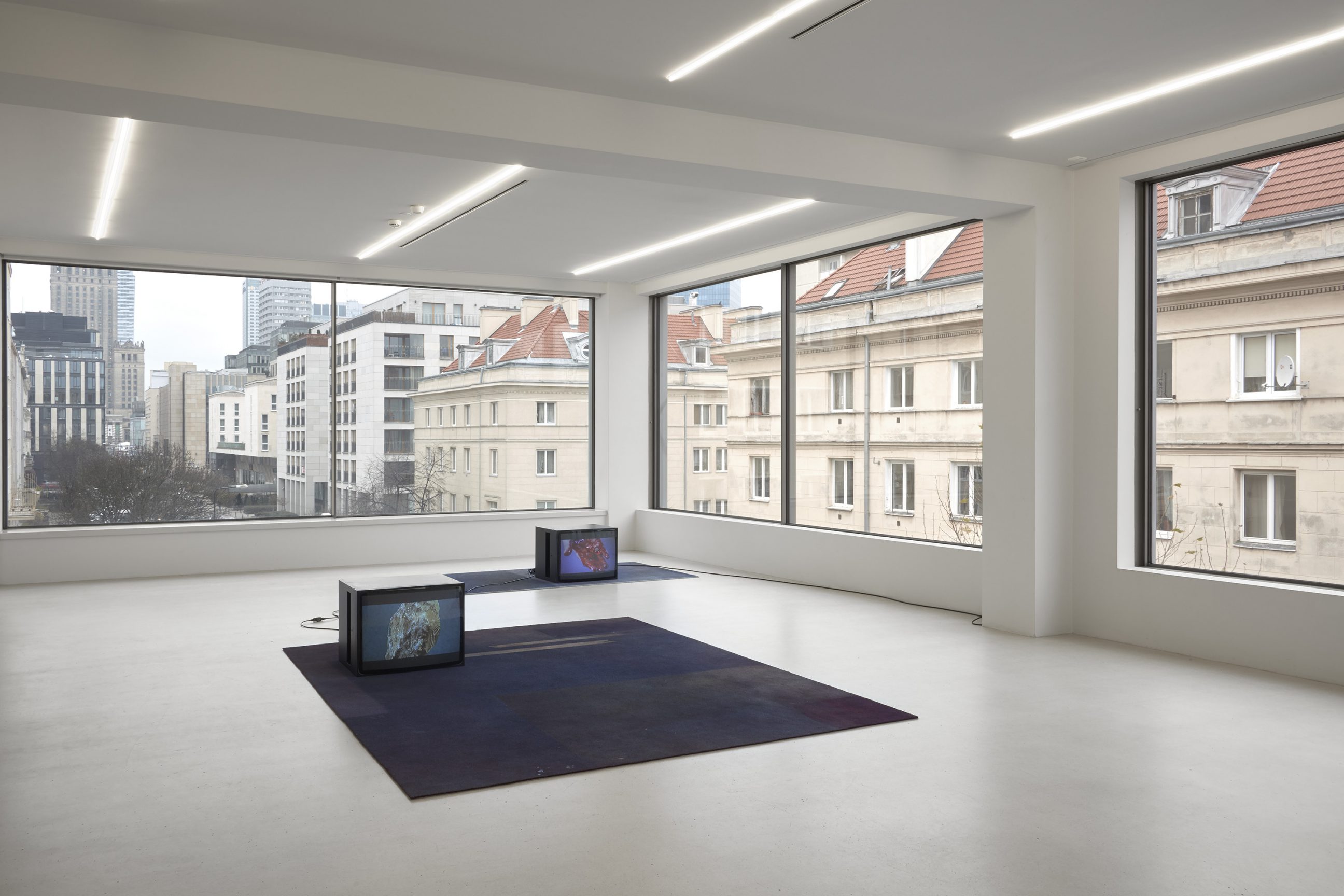
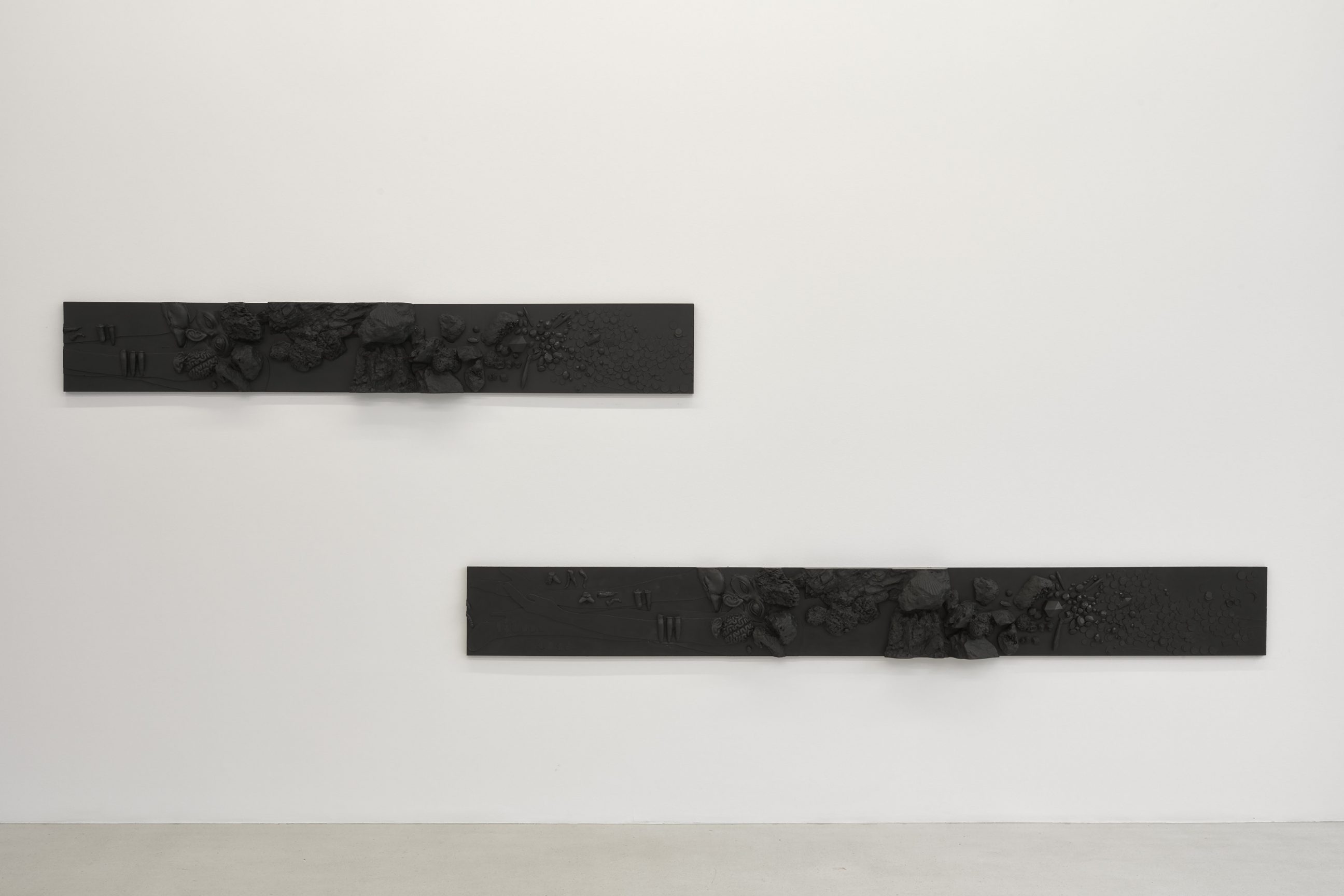

Wojciecha Górskiego 1A,
00-033 Warszawa,
Poland
Isabelle Cornaro works with objects; however she seldom shows any. She presents their images instead, their shapes, their shadows—sometimes even more distant echoes of their forms. Or, when she does exhibit a collection of things, then in pigments drips, or bathed in saturated color lights; while her sculptures render paraphernalia in a uniform they stand for something else than themselves: jewels are used to draw a map; carpets, trinkets, and dishes to form a landscape. Their presence is deferred, delayed, or put in brackets, even though it is strongly felt, as the artist carefully emphasizes the materiality as well as the artificiality of the objects she works with. Her films show bits and pieces covered, monochrome substance, making them paradoxically physical and abstract, as if detached from themselves.
How Isabelle Cornaro directs our gaze through her different ways of mise-en-scène is central here: scrutinized by the camera or fixed in a new materiality objects slip out of our hands but then expose themselves, and, by the same move, they expose the way they are looked at. They may “look like” still lives, elements of decoration, stage design, memorabilia from the flea market … that is to say, artefacts that are known to exist in endless numbers, always the same, always different, passing from one owner to the other, affected by the feelings and values one may give or see in them. However, issues of taste, or the surrealist approach to the charm of the objet trouvé, are a decoy here: the artist often insists she doesn’t fancy bargain-hunting, and that her “temptations” towards her collections are more analytical and classificatory, than they are sentimental. What’s at stake is to look one more time, closer, or from the distance, taking nothing for granted.
Parallel experiments are ongoing. From one work to the other, the same set of things is exposed to alterations that keep on changing their appearance, and the way we can consider them. In Isabelle Cornaro’s latest works, shown at Foksal Gallery Foundation, a group of objects is chosen, displayed in the studio, manipulated by assistants, and filmed; then they are arranged to be cast in a single block, then fragmented in different pieces; while stills from the movies become the starting point for wall paintings. The movies take their density from the experimental explorations of abstract cinema. Effects of superimpositions double and aggrandize items in Day for Night; while in Dolly, objects are shown spinning in front of the camera, slowly displaying the eccentric qualities of their surfaces. Between hypnosis and compulsion, both approaches challenge perception— is it possible to “exhaust” an object? Or one’s eye? A statuette, a chain, a rock, a glass ornament, all become fascinating and changing phenomena made of light, colour, shine, transparency. In Subterranean rhinestones get washed down with a viscous liquid resembling blood or juice; a hand plays with them, before a shoulder get splattered with red. This is the first time bodies and persons appear in Cornaro’s films, and they seem to be “subjects” of the same violence that hits “objects”, as they too end up cut by the frame, reified in the company of fragments of rocks and figurines. This gore approach to colour is to be found again in the artist’s preference for pigment projection when it comes to her Reproductions series: the spray paint is used as an irresolute, if technically complex, brush that traduces pictures of objects into abstract and blurred outlines. As for the sculptures Orgon Doors V, the mythic process of petrification—the gaze that turns being into stone—immediately comes to mind. There may be no catastrophe here though, as the long strips of elastomer seem animated, presenting an ongoing chain of events, or, rather, of mutations, from masks and castings of body parts to rocks, stones, and then money (or the other way round). From intuitive connections juxtaposition reveal a secret language between things in the world.
Thus Isabelle Cornaro’s work suggests an intense form of attention for the life of things, that is to say that her works are very concerned with the movements things are the “objects” and the “subjects” of; the changes and displacements that are imposed on them, as well as the social and personal relations they may be the catalysts of. Toys—things we are leaving children in care of which—coins and stones—things that are the sign of powers beyond what they are—tellingly abound in Cornaro’s works, as indeed the agency of such items is obvious. Gems rhyme with rhinestones in a sinister way, as they form a false pair that reminds us of the conditions upon which ore is extracted and put in circulation: exploitation, oppression, unfair trade. The moves and global wanderings of such things aren’t harmless. “All things are brief deposits of this or that property, photographs that conceal the reality of the motion from which their objecthood is a momentary respite” as wrote Arjun Appadurai in the book he edited in 1988, The Social Life of Things. Commodities in Cultural Perspective. The point of view of Cornaro’s works propose to suspend the uses and the significations the objects may be attached to, but doesn’t cancel them. Petrify doesn’t mean nothing moves anymore. The elastomer sculptures are flows of things running; from material to abstraction, from fetish to image, from object to subject, from subject to object, and back again.
Benjamin Thorel
Interview
Isabelle Cornaro, Interview with Matthew Schum, excerpt from Laxart catalogue « This Morbid Rountrip from Subject to Object », 2014
Matthew Schum How did the Homonyms slip-cast sculptures begin? What set the series in motion ?
Isabelle Cornaro The idea was to put something together without order—as a heap, something informe, or as a set of accumulated objects of a similar typology. You may notice the objects share the shape of a flower, an animal, etc. and that the objects in bas-relief posses stylized patterns, such as laces, decorated metal, ceramic qualities and so on. Along with the geometric shapes found in the other objects, I named them generally under the categories of naturalism, stylization and abstraction, each of which stood for different ways of interpreting a natural model. To put it another way, I wanted to register different grades of resemblance, in that sense, the casted objects are submitted to a double system of resemblance in that they resemble the real objects that have been cast and they serve as abstract ideas or categories. As for the chosen shape and using plaster material, it is important to me that the castings are made in one chunk or block so that the form of the objects appear to be the solidification of a liquid. Additionally, in making the Homonyms series, I thought very much about sixteenth-century Mannerist grottos in which characters were designed and cast out of shapeless stone-like backgrounds.
Matthew Schum There is something Baroque about your plaster casts.
Isabelle Cornaro I was always more interested in the Renaissance and most of all, Mannerist art. This last phase came right before the Baroque and announced it, in fact. Yet Mannerism remained much less narrative in its structure to my mind. Along with Mannerists grottos, I was very interested in buildings like the Medici Chapel of Florence and in the baptistery in which Ghiberti realized his sculpted door, The Gates of Paradise. I even went back to this work while working on the God Boxes series (2012).
Matthew Schum Yet even if your sculpture incorporates ornamental fragments, the way you cast objects silences them. Instead of form vibrating, as a Baroque fountain might take on organic qualities meant to be visible from beneath falling water, or how a profiled sil-houette appears to be lifelike upon a cameo, your casts really entomb things. As a whole, the objects you envelop in the sculptures look more like ossuary than privileged objects. Maybe it is bizarre, but I wonder if you think of the objects being more dead than alive after you have made one of your casts?
Isabelle Cornaro I agree with your description of Baroque as having a quality of vibration and expansion, as opposed to the silent aspect of my work. The objects are muted by being fixed as an image in a material that makes them more generic—they are the image of a face, a stone, a snake and so on — and by possessing the same consistency they seem to belong to the same kingdom and era once they are cast. It is also true that there is a funerary aspect to them as signaled in the title of the show at LA><ART—This Morbid Round Trip from Subject to Object, quoted from a previous interview with Quinn Latimer. Reflecting on our tendency to anthropomorphize objects and qualify them with feelings, whether it is due to memories and emotional value, or to hard work and financial value, I understood this movement as an extension of our own physical experience of objectification and death: namely, the transition from being a subject / animated person, to being an object / inanimate corpse. In my works, I connect this with my interest in the transition from shapelessness to formal properties and with an appreciation for chance and combinatorial processes.
Matthew Schum I ask about the “life” of the objects you collect because your working method employs and updates early twentieth-century found art. In Surrealism the found thing extracted from the marketplace has to do with unlocking the potential of the démodé. Breton’s writing, for example, envisions revolution in everyday things. An artist is defined by his or her power to recast the discarded object as a talisman or dream image. This alchemy is elemental to a movement that rewired art history to make for the avant-garde and, concomitantly, presented an alternative to the economizing of every imaginable thing as capitalism progresses. I wonder how you see your work with found objects relating to these tactics.
Isabelle Cornaro In this tradition, the found object was employed in various ways with very different meanings. Breton and the Surrealists gave it a magical and revolutionary potential, whereas Fluxus artists like Spoerri used it in a more conceptual way, embodying notions of process and time. The Nouveaux Realists followed a rather Pop tropism. I’d say that within all of these tactics, the use of found objects is linked to society. It is either a vehicle for collective symbolism, the factual evidence of a process or it points towards contemporary forms and notions of an era.
Matthew Schum I am glad you brought up Spoerri. His work employed the tradition of still life, painting to disengage from the game playing that has often plagued Pop Art as a sometimes bland means of provocation that was self-consciously ironic and therefore academic and commercial at once. Spoerri addressed this impoverishment of visual art with everyday life. His readymades confront us with our own mortality: he shows time elapsing not in minutes, hours and days, but in dirty ashtrays, coffee stained cups and saucers, dirty knives and all the forgotten meals that have come and gone before us upon worn tabletops. Among other things, mounting a dinner plate on the gallery wall somehow pointed to the despondence of the readymade. Yet Spoerri’s realism also goes back to sixteenth-, seventeenth- and eighteenth-century still life, which drew the eye with crafty compositions but, also, located the viewer’s body within the visual field of the objects radiating realistically, as though in a window display. Conversely, there is little idealism in Spoerri and I see that as relevant to the images you make in sculpture. That is the charm of this darker brand of found art you pursue. This is the heroism of modern life that finds the everyday object living out its final days in a dirty sink or a flea market free bin just like the bohemian lives in the dive bar cafe. I think your work channels this healthy negativism where many of your contemporaries would seem to shy away from it in favor of irony or simple calculations blending the high and low.
Isabelle Cornaro I guess it’s the way I understand a deconstructive approach. I love this idea of showing time elapse not in minutes, hours and days but with the dirty ashtrays, sad cups and saucers—it’s a very detailed and materialistic approach to showing time. With an early work I made titled Savannah Surrounding Bangui and the Utubangui River, which was a sort of prototype of the large installations Paysage avec Poussin et Témoins Oculaires, I was representing schematic somewhat naïve-looking landscapes with jewelry belonging to my parents. Somehow it was the same idea—something very materialistic and highly detailed about the irreducibility of the objects (necklaces, bracelets, pendants, so on), with their very specific qualities juxtaposed to their function as schematic even childish signs, for a common representation of space, such as a horizon, mountains and other features that compose a landscape.
Matthew Schum How do you see the found objects functioning, not in the medium of the plaster cast object, but as moving image?
Isabelle Cornaro The films are to me the exact equivalent of the castings: a record or a mechanical print, of real objects arranged sometimes in a composed way presented as accumulations. With the films a recording has less materiality, because it is made of moving images. Whereas the castings are still, by comparison, and possess strong materiality as volumes in space. There is also something very performative and childish in the films that occurs in the act of making. Objects are quickly arranged just before being shot and even while filming. Colored lights, spray and liquid paints are projected or poured in real time. It’s a playful process. In the same way the editing is extremely simple, almost schematic, and employs a very simple early-film grammar with successive fixed plans, panning, wide shots and close-ups.
Matthew Schum Perhaps because you are focused intently on the distributing objects in your work, it avoids being busy. Meanwhile, your videos and sculptures quietly contextualize each other. It’s visual art without being a big production. There’s no siren song with the refreshing quality of silent film.
Isabelle Cornaro The point is I find it always very difficult to insert a sound that doesn’t work only as a commentary of the images and has its own plastic “objective” and, let’s say, autonomous dimension.
—
Isabelle Cornaro pracuje z przedmiotami; rzadko jednak je pokazuje. W zamian prezentuje ich wizerunki, kształty, cienie – czasem nawet jeszcze dalsze echa tych wizerunków. Kiedy natomiast decyduje się już na pokazanie zbioru rzeczy, ich znaczenie zostaje zmienione: biżuteria staje się fragmentem mapy, dywany, bibeloty i naczynia zaczynają tworzyć krajobraz. Obecność przedmiotów ulega osłabieniu, zostaje odroczona lub ujęta w cudzysłów, nawet jeśli nadal silnie ją odczuwamy z powodu starannego podkreślenia zarówno ich materialności, jak i sztuczności. W filmach Cornaro widzimy rzeczy i drobiazgi poplamione farbą lub skąpane w nasyconym barwnym świetle. Rzeźby kryją w sobie przybory i rekwizyty, zatopione w jednolitej, monochromatycznej substancji, paradoksalnie fizyczne i abstrakcyjne, jakby oddzielone od siebie samych.
To, jak Isabelle Cornaro reżyseruje nasze spojrzenie poprzez rozmaite rodzaje mise-en-scène, odgrywa tu rolę kluczową: lustrowane przez kamerę albo zafiksowane w nowej materialności przedmioty wyślizgują nam się z rąk, obnażają same siebie, a tym samym to, jak na nie patrzymy. Mogą przypominać martwe natury, elementy dekoracji czy scenografii, starocie z pchlego targu, artefakty istniejące w niezliczonej ilości, zawsze takie same, a jednak zawsze inne, naznaczone uczuciami i wartościami nadawanymi i przypisywanymi im przez kolejnych właścicieli. Jednak kwestie smaku czy też surrealistyczne podejście do uroku object trouvé są tu zwodnicze: artystka często podkreśla, że nie lubi polowania na okazje, a przedmioty traktuje nie tyle sentymentalnie, co badawczo i klasyfikacyjnie. Stawką jest spojrzenie jeszcze raz, z bliska, albo z oddalenia, bez jakichkolwiek założeń.
Jednocześnie toczą się różne eksperymenty. W kolejnych pracach ten sam zestaw rzeczy poddawany jest przekształceniom zmieniającym ich wygląd i to, jak je postrzegamy. W ostatnich pracach Isabelle Cornaro pokazywanych w Fundacji Galerii Foksal grupa przedmiotów zostaje wydzielona, wyeksponowana w studio, poddana manipulacjom przez asystentów i sfilmowana; na kolejnym etapie przedmioty zostają odlane jako monolit, a potem podzielone na kawałki, podczas gdy klatki z filmów stają się początkiem obrazów naściennych. Intensywność filmów bierze się z ich eksperymentalnej eksploracji kina abstrakcyjnego. W Day for Night obrazy nakładają się na siebie, sprawiając, że przedmioty dublują się i rosną, podczas gdy w Dolly wirują one przed kamerą, powoli ukazując ekscentryczne jakości swych powierzchni. Pomiędzy hipnozą i kompulsją, oba podejścia rzucają wyzwanie percepcji – czy da się „wyczerpać” przedmiot? Albo oko? Statuetka, łańcuszek, skała, szklana ozdoba stają się fascynującymi i zmiennymi zjawiskami zbudowanymi ze światła, barwy, połysku, przejrzystości. W Subterranean kryształy zostają skąpane w lepkim płynie przypominającym krew albo sok; bawi się nimi dłoń, nim zostanie pochlapana czerwienią. To pierwszy raz, kiedy w filmach Cornaro pojawia się ciało i człowiek. Ludzie zdają się tu być podmiotem tej samej przemocy, która dotyka przedmioty: też kończą ucięci przez krawędź kadru, zreifikowani w towarzystwie kawałków skał i figurek. To krwawe podejście do barwy i przedmiotu napotykamy ponownie w upodobaniu artystki do rozlewanej farby w cyklu Reproductions: spray jest tu używany jako pędzel – nieprecyzyjny, choć technicznie skomplikowany – który przekłada obrazy przedmiotów na abstrakcyjne i nieostre kontury. Jeżeli chodzi o rzeźby Orgon Doors V, do głowy przychodzi nieodparte skojarzenie z mitycznym procesem petryfikacji, skamienienia – wzrokiem, który zamienia w kamień. Nie ma tutaj katastrofy, bo długie paski elastomeru wydają się żywe, prezentując nieustanny ciąg zdarzeń czy przemian, od masek i odlewów części ciała po kamienie, kawałki skały i wreszcie pieniądze (albo w odwrotnej kolejności). Intuicyjne połączenia i przeciwstawienia ujawniają sekretny język rzeczy.
Twórczość Isabelle Cornaro dotyczy intensywnej uwagi poświęcanej życiu rzeczy, poruszeń, których rzeczy są jednocześnie „podmiotem” i „przedmiotem”; zmian i przeniesień, którym są poddawane, a także społecznych i osobistych relacji, które mogą katalizować.
Zabawki – rzeczy, które powierzamy dzieciom – monety albo kamienie – rzeczy będące znakami większych sił – są tu, co znaczące, częstym materiałem, a ich znaczenie jest oczywiste. Klejnoty rymują się z kryształami w złowrogi sposób, tworząc fałszywą parę przypominającą nam o warunkach, w jakich ruda jest pozyskiwana i puszczana w obieg: wyzysk, opresja, niesprawiedliwy handel. Ruchy i globalne wędrówki takich rzeczy nie są nieszkodliwe. „Wszystkie rzeczy są krótkotrwałymi depozytami tego czy innego majątku, fotografiami ukrywającymi rzeczywistość ruchu, od którego ich przedmiotowość jest chwilowym wytchnieniem” – pisał Arjun Appadurai w zredagowanym przez siebie tomie The Social Life of Things. Commodities in Cultural Perspective [Społeczne życie rzeczy. Towar w perspektywie kulturowej] (1988). Perspektywa proponowana przez dzieła Cornaro zawiesza możliwe funkcje i znaczenia przedmiotów, ale nie neguje ich. Petryfikacja nie oznacza, że nic się nie porusza. Rzeźby są przepływami biegu rzeczy; od materii do abstrakcji, od fetyszu do obrazu, od przedmiotu do podmiotu, i z powrotem.
Benjamin Thorel
Interview
Isabelle Cornaro rozmawia z Matthew Schumem, 11 stycznia 2014
Matthew Schum: Jak narodził się cykl Homonimów? Co cię zainspirowało?
Cornaro: Chodziło o ułożenie pewnego zbioru bez porządku – jako stosu, czegoś informe, albo jako zestawu obiektów o podobnej typologii. Możesz zauważyć, że obiekty te oddają kształt kwiatu, zwierzęcia że posiadają stylizowane wzory, takie jak koronki czy zdobiony metal. Chciałam zarejestrować różne stopnie podobieństwa między nimi. Po odlaniu obiekty te zaczynają podlegać podwójnemu systemowi podobieństwa – z jednej strony przypominają realne obiekty, które zostały odlane, z drugiej funkcjonują jako abstrakcyjne idee czy kategorie. Co do wybranego kształtu i materiału (gipsu), ważne jest dla mnie, że odlew powstaje w jednym kawałku, przez co wywołuje wrażenie skrzepłej cieczy. Pracując nad Homonimami, myślałam też dużo o szesnastowiecznych manierystycznych grotach, w których postacie wyrastają z kamiennych ścian.
Schum: W twoich gipsowych odlewach jest coś barokowego.
Cornaro: Zawsze bardziej interesował mnie renesans, a zwłaszcza manieryzm. Ten ostatni bezpośrednio poprzedzał – i w istocie zapowiadał – barok. A jednak w moim rozumieniu pozostał o wiele mniej narracyjny. Oprócz manierystycznych grot bardzo interesowały mnie też takie budynki jak Kaplica Medyceuszów we Florencji czy florenckie Baptysterium z płaskorzeźbionymi Drzwiami Raju autorstwa Ghibertiego. Wróciłam nawet do tej pracy, kiedy pracowałam nad cyklem God Boxes (2012).
Schum: A jednak nawet jeżeli w twojej rzeźbie występują elementy ozdobne, to sposób ich odlania sprawia, że zostają wyciszone. Zamiast rozwibrowanej formy – jak w barokowej fontannie, która widziana zza tafli wody może nabrać cech organicznych, czy w kamei, gdzie cięta reliefowo sylwetka zdaje się poruszać – twoje odlewy stanowią grobowiec czy sarkofag dla przedmiotów, które wcale nie są tu uprzywilejowane. Może to dziwaczne, ale ciekaw jestem, czy te przedmioty po sporządzeniu odlewu stają się dla ciebie bardziej martwe niż żywe?
Cornaro: Zgadzam się z twoim opisem sztuki barokowej jako posiadającej cechy wibracji i ekspansji, w odróżnieniu od bardziej subtelnego, milczącego aspektu mojej twórczości. Przedmioty zostają uciszone przez osadzenie ich jako wizerunków w jednolitym materiale, posiadają wtedy tę samą konsystencję, zdają się należeć do tego samego królestwa i epoki, gdy zostaną już odlane. To prawda, że posiadają też aspekt funeralny, jak sygnalizuje to tytuł wystawy w LA><ART – This Morbid Round Trip from Subject to Object, cytat z wcześniejszego wywiadu z Quinn Latimer. Poddając refleksji naszą skłonność do antropomorfizowania przedmiotów i nadawania im domniemanych uczuć, zrozumiałam ten ruch jako przedłużenie naszego własnego fizycznego doświadczenia uprzedmiotowienia i śmierci: przejścia od bycia podmiotem/żywą osobą do bycia przedmiotem/trupem. W moich pracach łączę to z kwestią przejścia od bezkształtności do cech formalnych oraz z elementem przypadku i kombinatoryki.
Schum: Pytam o „życie” przedmiotów, które zbierasz, bo twoje metody działania nawiązują do – i aktualizują – sztukę znalezioną z początku XX wieku. W surrealizmie przedmiot znaleziony, wyabstrahowany z kapitalistycznego rynku, ma związek z odblokowaniem potencjału tego, co démodé. Breton kreśli wizję rewolucji rzeczy codziennych. To, co określa artystę, to zdolność przekształcenia odrzuconego przedmiotu w talizman albo obraz ze snu. Ta alchemia jest podstawą ruchu, który przedefiniował historię sztuki, by utorować drogę awangardzie i jednocześnie stworzył alternatywę dla ekonomizacji całości życia w miarę rozwoju kapitalizmu. Zastanawiam, się jak postrzegasz swoją pracę z obiektami znalezionymi w kontekście tych taktyk.
Cornaro: W ramach tej tradycji przedmiot znaleziony był wykorzystywany na różne sposoby w bardzo różnych znaczeniach. Breton i surrealiści nadali mu potencjał magiczny i rewolucyjny, podczas gdy artyści Fluxusu tacy jak Spoerri używali go w sposób bardziej konceptualny, ucieleśniając pojęcia procesu i czasu. Neorealiści poszli tropem raczej popowym. Powiedziałabym, że w ramach wszystkich tych taktyk wykorzystanie przedmiotów znalezionych związane jest ze społeczeństwem. Objet trouvé jest albo nośnikiem zbiorowej symboliki, faktycznym dowodem procesu albo wskazuje na współczesne formy i pojęcia danej epoki.
Schum: Cieszę się, że przywołałaś Spoerriego. Nawiązywał on do tradycji malarskiej martwej natury, by odciąć się od gier, które były częstą przypadłością pop artu jako czasem płytkiej prowokacji, świadomie ironicznej, a zatem jednocześnie akademickiej i komercyjnej. Odpowiedzią Spoerriego na to zubożenie plastyki była estetyka życia codziennego. Jego readymades konfrontują nas z naszą własną śmiertelnością: pokazuje upływ czasu nie w minutach, godzinach i dniach, lecz w brudnych popielniczkach, filiżankach i spodeczkach poplamionych kawą, brudnych nożach i wszystkich zapomnianych posiłkach, które stawały i znikały przed nami na wytartych blatach. Powieszenie na ścianie galerii obiadowego talerza wskazywało w jakiś sposób między innymi na melancholię readymade’u. Jednak realizm Spoerriego sięga też korzeniami XVI-, XVII- i XVIII-wiecznej martwej natury, która wabiła wzrok zręczną kompozycją, ale też umieszczała widza w wizualnym polu obiektów promieniujących realistycznie, niczym w sklepowej witrynie. Z drugiej strony u Spoerriego znajdziemy mało idealizmu i to wydaje mi się ważne w kontekście twoich rzeźb. To jest urok tej mroczniejszej odmiany sztuki z wykorzystaniem przedmiotów znalezionych jaką uprawiasz. To jest heroizm życia codziennego, w którym codzienne przedmioty dożywają swych ostatnich dni w brudnym zlewie albo w pudle z napisem „darmowe” na pchlim targu tak jak artysta-cygan mieszka w podrzędnym barze. Wydaje mi się, że w swojej twórczości znajdujesz ujście dla tego zdrowego negatywizmu, podczas gdy wielu współczesnych tobie artystów zdaje się uciekać od niego na rzecz ironii albo prostych kalkulacji łączących wysokie i niskie.
Cornaro: Myślę, że powodem jest moje rozumienie podejścia dekonstruującego. Podoba mi się niezmiernie idea pokazywania upływu czasu nie poprzez minuty, godziny i dnie, lecz poprzez brudne popielniczki, smutne filiżanki i spodki – to bardzo szczegółowe i materialistyczne podejście do tematu czasu. We wczesnej pracy Savannah Surrounding Bangui and the Utubangui River, która była rodzajem prototypu dla instalacji Paysage avec Poussin et Témoins Oculaires, przedstawiałam schematyczne i dość naiwne krajobrazy za pomocą biżuterii należącej do moich rodziców. W pewnym sensie chodziło o to samo: o coś bardzo materialistycznego i nieredukowalnego w przedmiotach takich jak naszyjniki, bransoletki, wisiorki, z bardzo specyficznymi cechami przeciwstawionymi ich funkcji jako schematycznych czy wręcz trywialnych znaków, dla łącznego przedstawienia horyzontu, gór i innych elementów składających się na krajobraz.
Schum: Jak postrzegasz funkcjonowanie przedmiotu znalezionego nie w gipsowym odlewie, ale w filmie?
Cornaro: Filmy są dla mnie dokładnym odpowiednikiem odlewów: zapisem czy mechaniczną odbitką realnych obiektów, czasem zaaranżowanych w kompozycje i prezentowanych jako zbiory. Przy filmie zapis jest mniej materialny, składa się bowiem z ruchomych obrazów; odlewy są nieruchome i jako bryły w przestrzeni posiadają silnie zaakcentowaną materialność. W robieniu filmów jest też coś bardzo performatywnego i dziecinnego. Przedmioty są aranżowane na szybko zaraz przed zdjęciami albo nawet w ich trakcie. Błyskają kolorowe światła, spraye i farby leją się w czasie realnym. To jest zabawa. Podobnie montaż jest niezwykle prosty, niemal schematyczny, wykorzystujący podstawową filmową składnię z kolejnymi nieruchomymi ujęciami, panoramami, szerokimi planami i zbliżeniami.